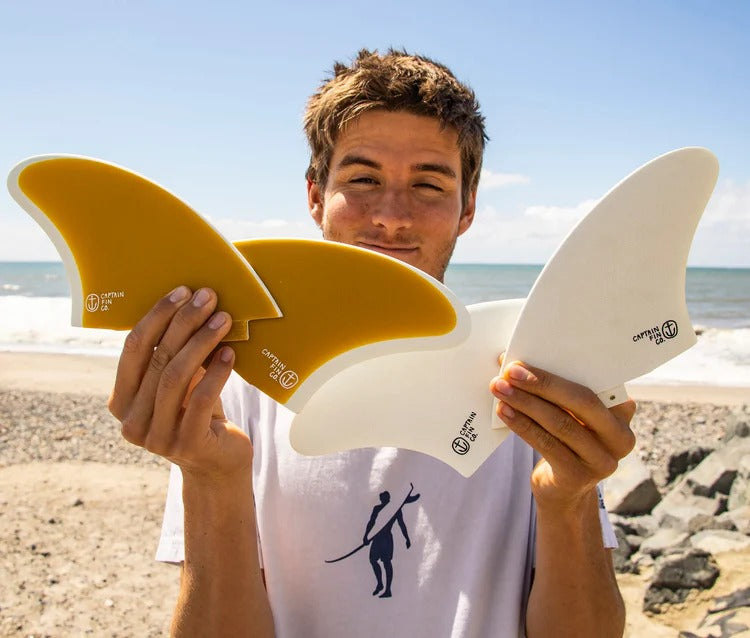
Understanding Surfboard Fins: How do fins work?

Surfing, a sport revered for its fusion of skill, nature, and innovation, hinges upon a delicate interplay of elements. Among these, the surfboard stands as an iconic emblem of the sport's evolution. Within the intricate anatomy of a surfboard, fins play a pivotal role, influencing maneuverability, stability, and overall performance in the water.
The Fundamentals of Surfboard Fins
At its core, a surfboard fin serves as a stabilizing and steering mechanism. These appendages, typically made from materials like fiberglass, plastic, or composite materials, are affixed to the bottom rear end of the board. They effectively cut through the water, providing traction and control as the surfer navigates waves.
The Anatomy of a Fin: Understanding Characteristics
1. Size:
- The size of a fin impacts its maneuverability and control. Larger fins offer increased stability and hold in powerful waves, while smaller fins enhance agility and allow for tighter turns.
2. Shape:
- Fins come in various shapes, including the classic single fin, twin fins, thrusters (three fins), quad fins, and even five-fin setups. Each configuration alters the board's performance, affecting speed, responsiveness, and turning capabilities.
3. Flexibility:
- Flex or stiffness in a fin affects how energy transmits through the board. Flexible fins offer more maneuverability and are forgiving in softer waves, while stiffer fins provide greater control and drive, ideal for larger, more powerful waves.
4. Base, Depth, and Sweep:
- The base width, depth, and sweep (angle of the fin) collectively determine the fin's hold, responsiveness, and turning radius. A wider base provides stability and drive, while a deeper fin enhances control in larger waves. The sweep influences how easily the board turns.
How Fins Influence Performance
1. Stability:
- Fins contribute significantly to a board's stability. Larger, more substantial fins excel in holding a line and maintaining control, making them suitable for riders seeking stability in challenging conditions.
2. Maneuverability:
- Smaller or differently shaped fins grant a surfboard greater maneuverability. This allows for quick turns, pivots, and tighter arcs, ideal for surfers aiming for a dynamic and agile style.
3. Speed and Control:
- The right fin setup can enhance a board's speed and control. Fins that complement the surfer's style and the wave conditions can optimize speed while maintaining a balance of control and responsiveness.
Tailored Fins for Varied Conditions
Surfers often fine-tune their board's performance by experimenting with different fin setups. For instance:
- Smaller Waves: Surfers might opt for smaller, more flexible fins to maximize maneuverability in smaller, less powerful waves.
- Larger Waves: Larger, stiffer fins offer increased control and stability in larger, more powerful waves, aiding in navigating critical sections and holding a line.
Conclusion
Surfboard fins, despite their seemingly unassuming appearance, are instrumental in shaping a surfer's experience on the waves. Their characteristics and configurations intricately affect the board's behavior, allowing riders to tailor their setups for diverse conditions and personal preferences. As surfing continues to evolve, the exploration and innovation surrounding surfboard fins remain a captivating facet of the sport, offering endless possibilities for enhancing performance and riding the waves with finesse.
You can shop all of our surfboard fins here:

